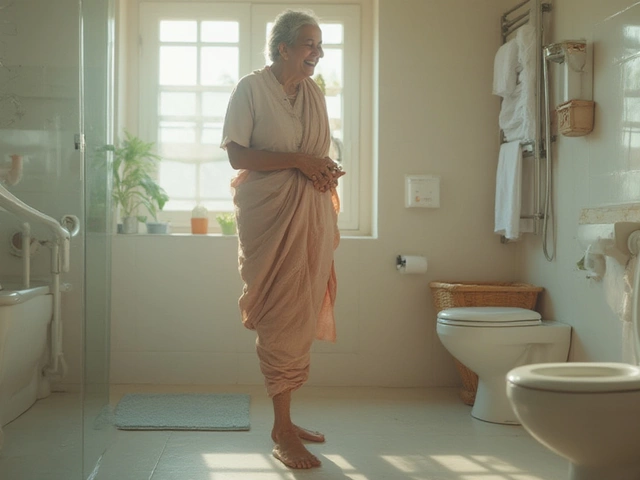Walk into any clinic in Pune a few years ago, and you’d almost always find metformin scribbled in the prescription pad whenever the topic was type 2 diabetes. Fast forward to 2025, and things look a lot more complicated. Metformin is still out there doing its work, but for many people, doctors are reaching for other options. Some reshape the rules of how we view blood sugar control, while others are surprising old faces getting a second life. The reason? Not everyone tolerates metformin, and sometimes it’s just not enough. If you’re wondering what’s on the menu for diabetes care now, you’re definitely not alone.
Why Doctors Are Moving Beyond Metformin
Metformin was once the go-to answer for nearly everyone with type 2 diabetes. It’s cheap, it works for most people, and it even helps a bit with weight loss. But the problem? Not everyone gets along with it. The side effects can be a deal-breaker: stomach trouble, nausea, a taste in the mouth that never quits. And for those with kidney issues, metformin can actually be unsafe. That’s not just in textbooks; there have been enough reports from clinics across India where patients land up with serious tummy upsets or are told to stop their meds due to kidney worries. According to some 2023 survey work from big public hospitals in Mumbai, up to 20% of people end up quitting metformin because they just can’t tolerate it. That’s a massive chunk of patients looking for something else to keep blood sugar under control.
Another big reason for this shift is the way doctors are now approaching diabetes. It’s not just about that fasting glucose number or A1c. There’s an understanding that these drugs need to go easy on your heart and kidneys, too. That’s where the new kids on the block—GLP-1 receptor agonists and SGLT2 inhibitors—come in. They don’t just lower blood sugar; they protect your heart in a way metformin never could. It’s a game-changer, especially since heart and kidney disease are what make diabetes scary for most families. The Indian guidelines have started listing these newer drugs right up there, especially for anyone who already has heart or kidney issues.
The last driving force? Personalization. Doctors are tailoring diabetes care like never before. They dive into your medical history, your risk factors, even your financial situation—because let’s face it, not all the alternatives are as cheap as good old metformin. This means two people walking into the same clinic with the same A1c could walk away with totally different prescriptions. It’s all about balancing sugar control with your other risks and your daily life. If you can’t stand injections, there are pills. If you want to drop some kilos along the way, there are options for that too.

The Main Alternatives: What’s Really Being Prescribed
So what do doctors choose instead of metformin? The short list right now is dominated by two heavy hitters: SGLT2 inhibitors and GLP-1 receptor agonists. Here’s what’s happening across India, especially in places like Pune, Mumbai, and Bangalore.
SGLT2 inhibitors like dapagliflozin, empagliflozin, and canagliflozin are fast becoming first-line choices for many patients. They work by stopping your kidneys from reabsorbing sugar, literally causing you to pee excess sugar out of your body. What sets them apart is not just the sugar drop—they also help with weight loss and reduce heart failure risk. In 2024, a big clinical trial led out of CMC Vellore showed that Indian patients using SGLT2 inhibitors saw a 35% reduction in new heart failure events compared to those on sulfonylureas or other add-ons. The side effects are mild for most people, but the risk of genital infections is something to watch for. For many, it’s a small price to pay for the benefits, and new hygiene tips are helping patients avoid trouble.
Next up, GLP-1 receptor agonists such as semaglutide (now available as a low-dose weekly injection and in tablet form), dulaglutide, and liraglutide. These drugs mimic a gut hormone that boosts insulin, slows digestion, and makes you feel full. You’ve probably seen social media buzz about them being "weight loss injections"—and that’s not an exaggeration. Doctors now prescribe these alternatives for people who need to lose weight or want to reduce their long-term cardiac risk on top of sugar control. Some patients even go off blood pressure meds after shedding kilos. According to Dr. Amita Bansal from Apollo Pune, "I have patients who have tried everything—diet, exercise, metformin. With semaglutide, they actually feel in control of food cravings for the first time." Side effects run from mild nausea (usually temporary) to rare but serious pancreatitis, which is why follow-up is key.
There’s also talk about DPP-4 inhibitors like sitagliptin, vildagliptin, and teneligliptin. These are familiar in India, especially because they come as combo pills and are easy on the stomach. While not as powerful as GLP-1 drugs for weight loss, they’re a gentle option, especially for elderly patients or those with kidney problems. Sulfonylureas (like glimepiride) and thiazolidinediones (like pioglitazone) haven’t disappeared, but they’re falling out of favor thanks to risk of low sugars or weight gain. Insulin, of course, is still the rescue drug for people who have very high sugars or can’t use any oral pills.
But here’s something a lot of people miss: doctors in India are increasingly mixing and matching. For example, the popular prescription is now SGLT2 inhibitor + DPP-4 inhibitor or GLP-1 agonist + metformin (if you can tolerate it). The combos give a double hit—lower sugars, less weight, and bonus heart or kidney protection. You’ll even find triple combinations for tough cases.
If affordability is a major concern, your doctor might recommed a step-wise approach: start with the lowest-dose DPP-4 or sulfonylurea, monitor closely, and watch for side effects. Some government facilities now offer SGLT2 inhibitors at subsidized rates under special schemes for people with both diabetes and kidney problems. Don’t be shy about asking what options are publically available, especially if you’re worried about costs.

What Indian Patients Need To Know: Tips, Costs, and Future Trends
The diabetes treatment world is exploding with options, but every choice has a real impact on your wallet, lifestyle, and future health. Here’s what doctors and patients in India should keep in mind as they step away from metformin.
- Cost is a big factor: While metformin costs as little as twenty rupees a month, SGLT2 inhibitors and GLP-1 drugs can run anywhere from Rs. 2000 to Rs. 7000 a month ( and more, if you go for the weekly injections ). Many Indian insurance plans still don’t cover the newer drugs well, so always ask about generics, government supply options, or step therapy plans.
- Diet and exercise matter even more now: These new drugs do wonders, but nobody escapes the basics. You’ll get the most out of your treatment if you double down on practical changes—daily 30-minute walks, smaller portion sizes, and little swaps like switching out sweet tea for lemon water. Don’t expect the medicines to do all the heavy lifting.
- Watch for side effects closely (and report them early): With metformin, you probably knew about the digestive upset. With SGLT2 inhibitors, watch for genital itching, urinary infections, and drink enough fluids—especially in the summer. With GLP-1 agonists, stay aware for ongoing tummy trouble or sudden, severe pain (a doctor visit is a must in that case). Side effect tracking apps are now pretty handy, and many major hospital chains now send regular SMS follow-ups for patients trying new meds.
- Advocacy is up and coming: Patient groups are starting to push for more insurance coverage for modern diabetes drugs, and real progress is happening in 2025. In big cities like Pune, community pharmacies linked to hospitals have started “combo pack” discounts once you show your prescription. It’s worth checking, especially if you’re on a long-term plan.
- Telemedicine helps personalize care: New platforms now connect patients in small towns with endocrinologists in Mumbai, Delhi, or even abroad, without long travel or wait times. Virtual check-ins mean fast dose adjustments, side effect management, and less time off work, too. This matters especially for working adults who often skip follow-ups.
If you’re worried about switching from metformin, or you’re just starting down the diabetes path, the important thing is open discussion. Talk about your day-to-day challenges. Ask about heart, kidney, and weight risks specifically—not just what will bring the A1c down. And don’t discount old-school tips: family support (especially when everyone eats together at home), community yoga classes, and support groups still play a huge role in diabetes control, especially when you’re adjusting to new meds.
As Dr. Rajesh Jain, a leading diabetologist in Pune, puts it:
“The future of diabetes care in India is both about getting numbers down and avoiding long-term complications. Modern drugs are only part of the solution—the rest is about how well we fit the treatment to the person, not just their lab reports.”
The diabetes landscape, especially in India, will keep getting more personal. As newer medications become more affordable and more widely available, and as doctors learn to tailor care even better, people can expect better outcomes—and fewer rough side effects than before. Don’t get stuck thinking metformin is your only option. The world of diabetes care has moved on, and it’s worth exploring what fits you best right now.





